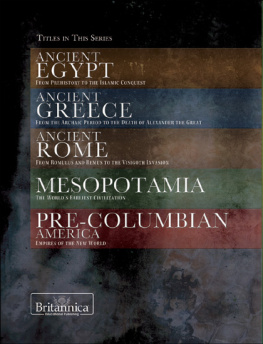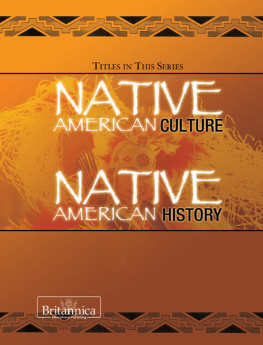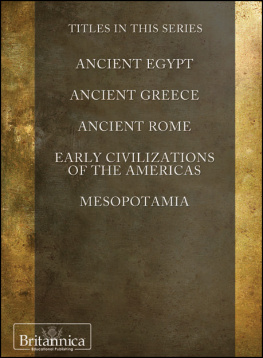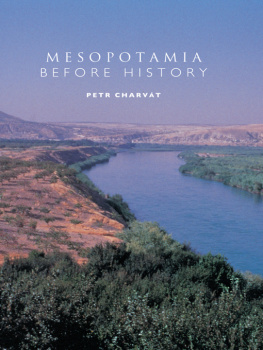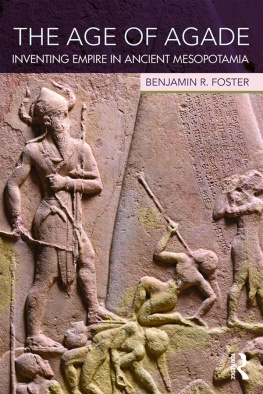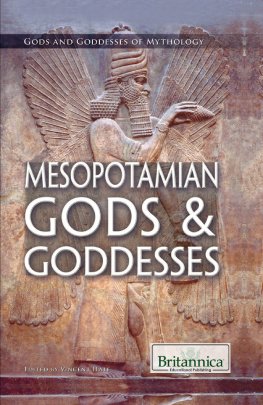MESOPOTAMIA
THE WORLDS EARLIEST CIVILIZATION
THE BRITANNICA GUIDE TO ANCIENT CIVILIZATIONS
MESOPOTAMIA
THE WORLDS EARLIEST CIVILIZATION
EDITED BY KATHLEEN KUIPER, MANAGER, ARTS AND CULTURE

Published in 2011 by Britannica Educational Publishing
(a trademark of Encyclopdia Britannica, Inc.)
in association with Rosen Educational Services, LLC
29 East 21st Street, New York, NY 10010.
Copyright 2011 Encyclopdia Britannica, Inc. Britannica, Encyclopdia Britannica, and the Thistle logo are registered trademarks of Encyclopdia Britannica, Inc. All rights reserved.
Rosen Educational Services materials copyright 2011 Rosen Educational Services, LLC.
All rights reserved.
Distributed exclusively by Rosen Educational Services.
For a listing of additional Britannica Educational Publishing titles, call toll free (800) 237-9932.
First Edition
Britannica Educational Publishing
Michael I. Levy: Executive Editor
J.E. Luebering: Senior Manager
Marilyn L. Barton: Senior Coordinator, Production Control
Steven Bosco: Director, Editorial Technologies
Lisa S. Braucher: Senior Producer and Data Editor
Yvette Charboneau: Senior Copy Editor
Kathy Nakamura: Manager, Media Acquisition
Kathleen Kuiper: Manager, Arts and Culture
Rosen Educational Services
Jeanne Nagle: Senior Editor
Nelson S: Art Director
Cindy Reiman: Photography Manager
Matthew Cauli: Designer, Cover Design
Introduction by Dan Faust
Library of Congress Cataloging-in-Publication Data
Mesopotamia : the worlds earliest civilization / edited by Kathleen Kuiper.1st ed.
p. cm.(The Britannica guide to ancient civilizations)
In association with Britannica Educational Publishing, Rosen Educational Services.
Includes bibliographical references and index.
ISBN 978-1-61530-208- 6 (eBook)
1. IraqCivilizationTo 634. I. Kuiper, Kathleen.
DS71.M55 2010
935dc22
2009053644
On the cover:The reconstructed Ishtar Gate, an enormous burnt-brick entryway located over the main thoroughfare in the ancient city of Babylon. Ishtar is the goddess of war and sexual love in the Sumerian tradition. Nico Tondini/Robert Harding World Imagery/Getty Images
Pp. :Panel from a bronze door showing the storming of the Syrian city of Hazazu. DEA/G. Dagli Orti/Getty Images
INTRODUCTION

Artists depiction of the biblical Tower of Babel. The story of the tower may have been inspired by the Babylonian tower temple Bab-ilu (Gate of God), or in Hebrew Babel or Bavel, located north of the Marduk temple. Hulton Archive/Getty Images
Fantastic and massive human-headed, winged bulls and a curious wedge-shaped writing system are the best-known legacies of the place known as Mesopotamia. Although these objects give some sense of the grandeur and mystery of an ancient culture, the influence of the region and its people extends far beyond them. Long described as the cradle of civilization, Mesopotamia is clearly one of the earliest civilizations in the world. Its many contributions include the development of written language, as well as several advances in science, economics, law, and religion. Mesopotamian astronomers, for example, devised a 12-month lunar calendar and divided the year into two seasons. Mesopotamian mathematics is a sexagesimal, or base 60, system, which survives to this day in 60-minute hours and 24-hour days. The Sumerian calendar was divided into seven-day weeks. Many of these remarkable contributions are discussed in the pages of this volume.
When contemporary historians use the term Mesopotamia, they typically mean the region in southwest Asia that includes modern-day Iraq, as well as portions of Turkey, Iran, and Syria. Originally, however, the Hellenistic Greeks used the name Meso-potamos, the land between the rivers, to refer specifically to the region between the Tigris and Euphrates rivers. These rivers provided the fertile soil and water needed to support a sedentary, agrarian way of life, allowing humankind to abandon a nomadic hunter-gatherer lifestyle. Largely because of this feature, Mesopotamia was one of several regions in which agriculture was born.
For nearly 2,000 years, information about Mesopotamia was limited. The Hebrew Bible provided some insight into the history and culture of the region. The Greek historian Herodotus first reported on the region in the 5th century BC. Some 100 years later, the Greek mercenary, historian, and philosopher Xenophon wrote in Anabasis (Upcountry March) about his experiences as part of an expedition that crossed Anatolia and traveled along both the Tigris and the Euphrates. Although extant in fragments only, the writings of Berosusa Chaldean priest of Bel who immigrated to Greeceprovide some of the most thorough and reliable accounts of the region.
Writing at the beginning of the 3rd century BC, while living on the island of Cos, Berosus produced the Babyloniaka, which consisted of three books. The first of these described the land of Babylonia and the Babylonian creation myth. It also described and a half manhalf fish known as Oannes, who taught early humans about things such as law, the arts, and agriculture, thus bringing civilization from the sea. The second and third books contained the chronology and history of Babylonia and of later Assyria, from prehistory to King Nabonassar (Nabu-nasir; 747734 BC) down to Berosuss own time.
Urban areas of considerable size began to emerge in ancient Mesopotamia during the early sixth millennium BC. The region supported important settlements such as Uruk, Nineveh, and Babylon. These centres of social and cultural life possessed one or more shrines to major deities as well as extensive granaries that served as a focal point for smaller settlements.
The central structure in any ancient Mesopotamian city was the ziggurat, or temple complex. These massive step pyramids, as the name suggests, had receding tiers and were each topped with a shrine. Each shrine was dedicated to a single god or goddess, and each city had its own patron deity. So close was the link between city and god that wars between cities were frequently considered to reflect wars between the gods and goddesses.
The other principal structure in a Mesopotamian city was the rulers palace, a large compound containing private residences, sanctuaries, courtyards, and storehouses. Both the ziggurat and the palace were adorned with bas-reliefs and inscriptions that depicted cultic practices and civic and military accomplishments. Gates and important passageways were flanked by massive sculptures of mythological guardian figures, usually possessing a human head on the body of a winged bull or lion.
The regions geography was such that Mesopotamian cities were separated from one another by vast stretches of desert or swamp. This circumstance led to the development of city-states, autonomous entities whose territory consisted of a single city and the surrounding area. Tensions often developed between neighbouring city-states, leading to armed conflicts over land and dominion. The first successful forced unification of city-states came in 2331 BC, when Sumer was conquered by what would become known as the Akkadian empirewhich would, itself, be conquered several generations later by the Babylonian empire. As such, there is no unified Mesopotamian culture, but rather, a patchwork of cultures formed as conquering civilizations either adopted, co-opted, or superseded the traditions and beliefs of vanquished city-states.
Next page

